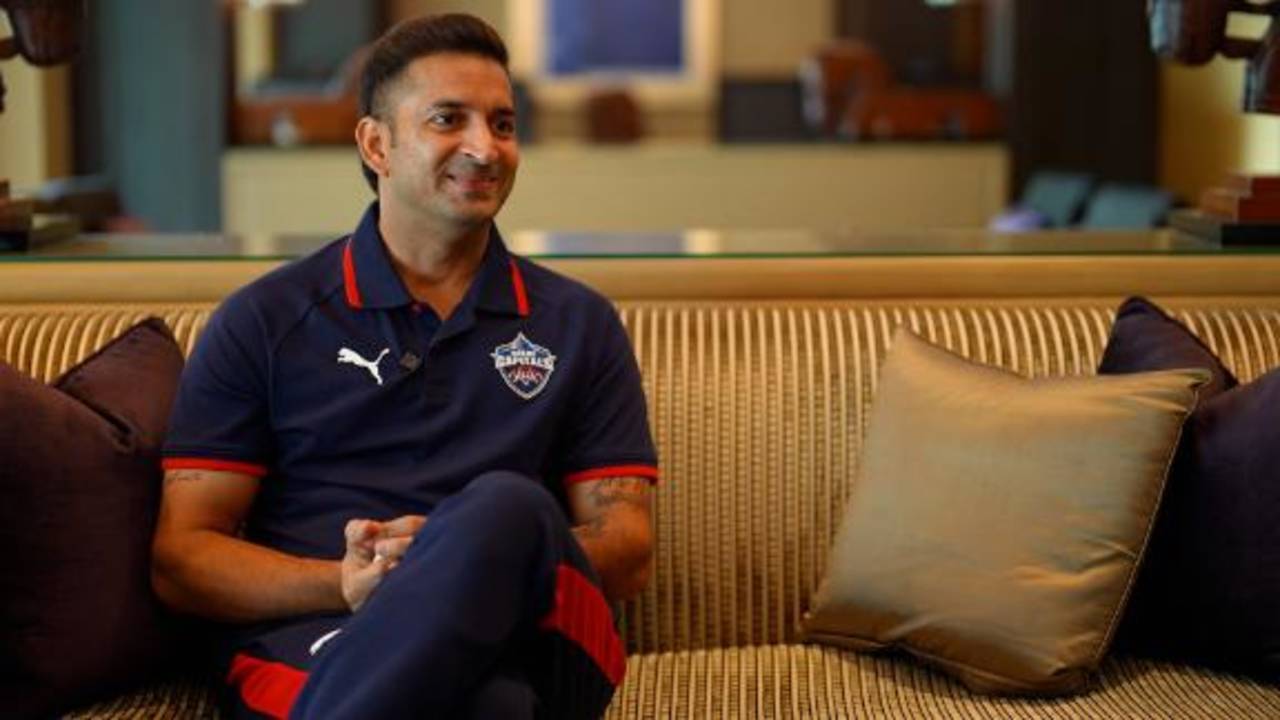Mohit Sharma: Use of saliva is 100% helping the ball reverse swing
DC fast bowler also said changing the ball after ten overs in the chase was helping control the ball better
ESPNcricinfo staff
15-Apr-2025
Delhi Capitals (DC) fast bowler Mohit Sharma is enjoying the use of saliva on the ball again and says the ball is reverse swinging more in IPL 2025 after the rule was changed for this season.
Another rule to come into effect this IPL was giving the team bowling second the option of changing the ball after ten overs - whether there was dew or not - which is also "making a difference" for the bowlers.
When asked on the eve of DC's next game, against Rajasthan Royals (RR) in Delhi, if the use of saliva was making a difference, Mohit said: "100%. In 70% of the games, the ball is tailing in and it's only because the saliva is heavy, and our sweat is not so heavy. If the ball is heavier on one side it will tail in. Right now, there's not as much dew in most grounds to say that the wet ball is also reverse swing."
The ICC had banned the usage of saliva on the ball five years ago, a rule which was followed by the member boards across all levels of cricket, because of Covid-19. Just before the start of this season, the IPL authorities changed the rule back to allow its use again after the majority of IPL captains called for the change.
Related
Saliva may not be the only reason we're seeing reverse swing this IPL
DC win an IPL classic in Delhi after Super Over drama
'As it is we are seeing such big sixes' - Mohit Sharma backs bat checks
Beleaguered RR need a batting fix against in-form DC
Mohit: 'It is important to have pressure. It always teaches you something'
Along with that, they also introduced the rule of letting the bowling captain change the ball in the second half of the chase, mainly to offset the effect of dew on the ball, as a wet ball is harder to grip and control. The bowling team can choose to change the ball any time after the tenth over in the second innings, whether there is dew or not.
It was seen recently in DC's last game when they hosted Mumbai Indians (MI) on Sunday. With considerable dew around in Delhi, MI opted to change the ball after 13 overs when DC needed 61 to win from 42 balls with six wickets in hand, and brought back legspinner Karn Sharma. He got turn straightaway with the dry ball and had Tristan Stubbs miscue the third ball of the over to Naman Dhir.
"There's help (after the ball is changed) and we saw it in the last game too," Mohit said. "The first ball had been used for 12 overs and was a little wet because dew had started to settle in when our innings had ended. There was more dew in the second innings. And later the 13th or 14th over Karn bowled, the ball turned to Stubbs.
"So definitely the second ball, which is harder, makes a difference although by the 15th-16th over, the ball's condition is like the first one. But being a bowler, 100% there's a difference. Like if I'm bowling the 14th or 15th over after the ball change, I'll be more confident of bowling a yorker because the ball is dry, it won't slip."

